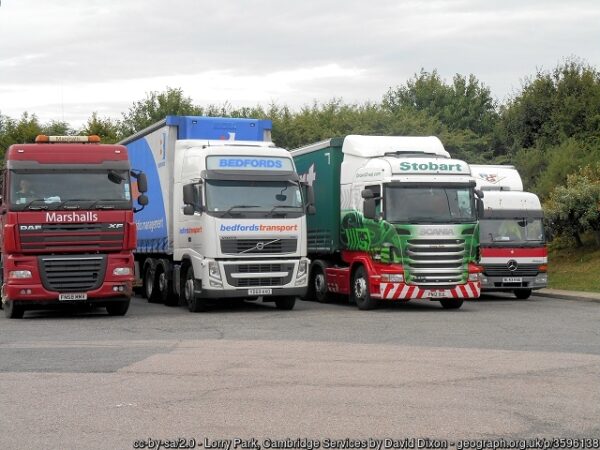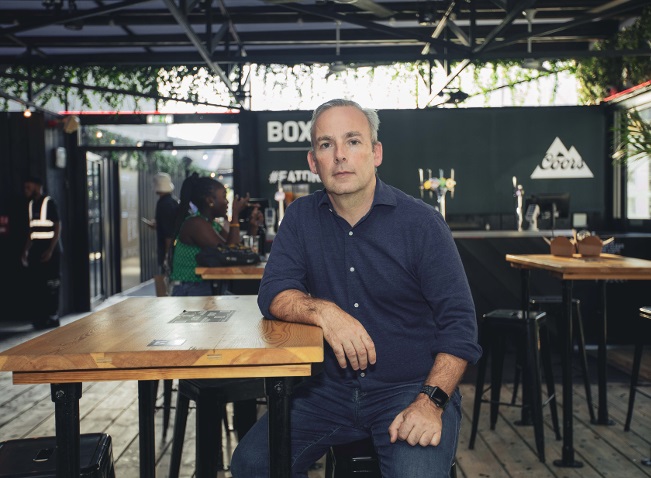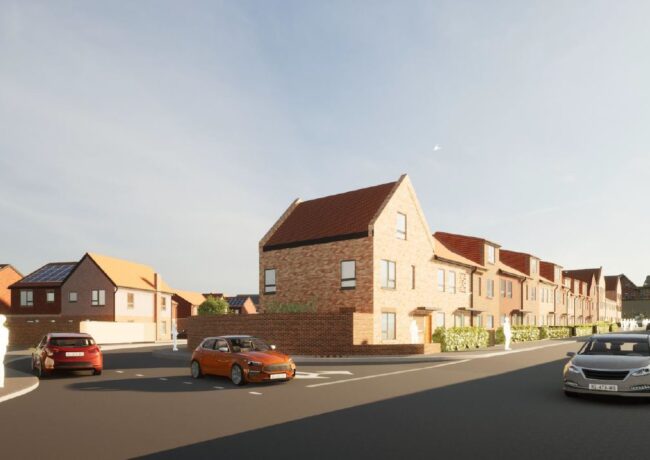The Subplot
The Subplot | Hot sheds, Preston plan, Manchester offices
Welcome to The Subplot, your regular slice of commentary on the North West business and property market from Place North West.
This week: a government decision to call in a clutch of North West warehouse planning applications could cost the regional economy more than £1.4bn in deferred economic benefits. Preston’s property future is up for grabs as the Central Lancashire Development Plan is revised. Meanwhile, Manchester’s office take-up figures may be better than you thought. Subplot crunches the numbers.

THE £1BN-PLUS COST OF DELAY
 The fate of five North West logistics schemes, totalling 6.8m sq ft, hangs in the balance. Seven months after the government called in the planning applications, and a year after some schemes first won planning permission, the delay is causing mounting frustration. New analysis suggests it also puts on hold an eye-watering £1.4bn worth of economic benefits.
The fate of five North West logistics schemes, totalling 6.8m sq ft, hangs in the balance. Seven months after the government called in the planning applications, and a year after some schemes first won planning permission, the delay is causing mounting frustration. New analysis suggests it also puts on hold an eye-watering £1.4bn worth of economic benefits.
Hang on… did you say £1.4bn?
Yes, absolutely. That’s the projected total boost to GVA delivered by the schemes’ construction and delayed first year of operation, a boost which has now been postponed along with £422m wages unpaid, and £95m tax uncollected. These are staggering numbers.
How come?
In May 2020, the Ministry for Housing, Communities & Local Government announced that it was calling-in four North West logistics schemes. Langtree’s proposal for a 1m sq ft logistics park on the 230-acre former Parkside colliery at Newton-le-Willows; Tritax Symmetry’s 1.4m sq ft at Symmetry Park, Wigan; Liberty Properties (Prologis) and Stobart’s £75m plans for a 630,000 sq ft distribution centre at Warrington; and Harworth’s 1m sq ft plan for Wingates, Bolton. Peel L&P subsequently asked for its undetermined application for 1.8m sq ft at Haydock Point to be added to the list, making a total of 6.8m sq ft in the balance. Some of these sites come with a lot of history. Stobart’s Warrington site was turned down in 2018, and the Parkside plan generated plenty of local heat. Others are less obviously controversial and have local authority support.
It all adds up
In big-picture terms we already know how significantly warehousing can contribute to the economy. Research last year by Turley said 130m sq ft of logistics development by 2050 has “the potential to achieve transformational growth and create an additional 174,000 jobs if key barriers are addressed.” New research by Turley Economics, published in December, helps answer the question in more detail. The five schemes are not the same, so some caution is required on numbers. Occupier-led schemes will generate non-standard outputs. Even so, Turley argues that every 1m sq ft of new logistics floorspace supports 1,400 jobs during construction, and adds £98m to GVA, as well as contributing £25m in wages and £5m in tax take. After the tenants move in, every 1m sq ft of logistics floorspace supports 2,400 jobs and adds £110m to GVA, along with £37m in wages and £9m in tax paid. The two-year delay on the 6.8m sq ft in dispute adds up to a huge deferred benefit to the regional economy. If we assume just one year of operation has been missed, and construction delayed by one year, it amounts to £1.4bn GVA foregone, £422m wages unpaid, and £95m tax uncollected.
Stopped clocks
Time has stood still for four of the five schemes since May. In the months since, sheds have become the sexiest real estate on the planet as e-commerce drives demand. Tritax Symmetry says North West logistics enquiries total between 11m sq ft and 14m sq ft, including 8.5m sq ft for sites between junctions 20 and 26 of the M6. Missing out on this is frustrating at a time when there is a real need for industrial jobs, as dramatised by the threat to Vauxhall’s Ellesmere Port plant.
None of this is cheap
Andrew Dickman, director of Tritax Symmetry, is wondering how much longer he has to wait. “We were told planners were minded to grant consent on 14 January 2020. In the normal course of events we could have moved forward. Instead, we have had to spend significantly on a public inquiry and delay for a year. And QCs are not cheap.” Dickman adds: “There’s also the cost in lost opportunities. Industrial take-up for big box units in 2020 was at record levels, over 50m sq ft, and we could have had a fighting chance of delivering for every enquiry coming to the North West.” Dickman hopes his new scheme could welcome occupiers by Q1 2022.
Is this all about politics?
The delay isn’t entirely a mystery. There are legitimate reasons for slow progress, among them the fact that the planning inspector cannot submit a report until Section 106 agreements are completed. A mortgagee’s signature is still required in at least one case, which is hardly the ministry’s fault. Even so, there are some who suspect the call-in was inspired by the desire to appease voters in what are, in several cases, marginal ‘Red Wall’ seats. There are others, yet more cynical, who think the Government plans to approve all five schemes then announce the decision as a great victory for levelling-up.
The ministry responds
A statement to Subplot from the ministry says: “We do not know when the Inspector anticipates submitting his report. The appeal opened on 1 December, sat for six days and the inspector is carefully considering the evidence submitted during the inquiry and will take account of current planning legislation, policy and guidance when writing his report for the Secretary of State to consider when making his decision. The date by which the Secretary of State will make his decision will be published once the report is submitted to him.”
Conclusion: April could be a good date for the diary.
DRIVING THE WEEK

The Central Lancashire Development Plan is creaking into life, again
Preston’s Big Plan
Preston’s property future depends on the Central Lancashire Development Plan. This week it reaches a milestone as the latest round of drafting gets underway. The city centre’s 21-acre Stoneygate site, and a potential shortage of employment land, will be key issues.
The Central Lancashire Development Plan is creaking into life, again. A joint effort by Preston, South Ribble and Chorley councils, it is due to replace the existing shared strategy agreed in 2012. Councillors are due to meet this week to mull the results of last year’s initial round of consultation and start work on a more detailed consultation on preferred options, due this summer. A draft plan will be published late next year.
TL;DR
It is early days but there is already more paperwork, spread over more websites, with many more links to PDFs, than any human can be expected to grasp. Happily, Subplot can spare you the trouble. The main points of interest are proposals for a student housing cluster and a shrinking retail core in Preston, a lot of anxiety about greenfield housing development, a re-think on employment land, and options to develop a selection of large city centre sites, of which the 21-acre Stoneygate stands out.
Too big too soon
The student cluster and shrinking the retail core around Church Street are widely regarded as wise reality checks. But the Stoneygate site could be rather a stretch: it will need a lot of money, a lot of leadership, and a capable developer. A question mark hangs over each of those points. “Massively ambitious,” Subplot was told, particularly if the council envisages one large phased development rather than something smaller and granular. Andrew Taylorson, director of Preston agents Eckersley, says: “The issue will be viability. It will have to be residential because there are no commercial uses that could make it viable.” The current city options document has it down for mixed residential and employment.
But the office market
There’s some fretfulness here. Blackpool and Blackburn have seen new, council-inspired Grade A office developments: not so in Preston. Danny Pinkus, partner at Robert Pinkus & Co, says: “The plan needs a focus on delivering more Grade A space. We have none, which is a travesty when we have known demand.” Rents would have to double to make new development viable, which makes Pinkus suspect local authority wraparound leases and guarantees would be needed to get things going.
And don’t forget land
The 2019 Central Lancashire Employment Land Study Update suggested Preston needed another 54 acres, South Ribble 105 acres and Chorley 88 acres. The background paperwork notes that office supply is constrained, with some chunky numbers floated: 936,000 sq ft is needed in Preston, more than 1m sq ff in South Ribble. The fear is that achieving these totals, or anything like them, will be impossible thanks to insatiable demand for land from the residential sector. The Leyland test track site has already been sacrificed for housing, and maybe more will follow. Pinkus says: “Some of the resi sites should be employment sites, we have a real shortage of land like we’ve never known before.” Prime employment land prices now reach £350,000 an acre, up sharply from around £250,000 in 2018/19.
The big question
Can Preston City Council cope with the pressure from residential developers? Nobody is betting on it. The council needs community infrastructure levy funding to push on with its city centre plans. The Central Lancashire Development Plan has a long way to go, and it is sure to get a lot more political once the implications for greenfield and green belt development become clear. A steady hand is needed to guide the process, otherwise it could collapse spectacularly in a repeat of the fate that befell the Greater Manchester Spatial Framework. Everything depends on whether the local political top brass can provide leadership.
IN CASE YOU MISSED IT…

BT signed for 175,000 sq ft at New Bailey, the largest deal of the year
Manchester office take-up is better than you thought
Yes, yes, apples and pears, chips and bananas, Subplot gets it: directly comparing Manchester with Birmingham is a dangerous game. Yet newly published office take-up figures from both cities are the exception that proves the rule.
It was a tough year, obviously. Manchester Office Agents Forum data shows city centre take-up of 800,000 sq ft in 146 deals. South Manchester contributed 273,000 sq ft and Salford Quays/Old Trafford 227,000 sq ft, making a grand total of 1.3m sq ft, down by about 40% on the 2019 figures. The city centre crashed from 1.45m sq ft, and the 2020 grand total was a country mile from the 2.3m sq ft recorded in 2019.
Small and sluggish
Birmingham’s office market is much smaller, so we mustn’t get too fixated on the raw totals. In 2020, Birmingham take-up was just 521,000 sq ft. Birmingham’s total was down about one-third compared to 2019, a rather less severe drop than Manchester experienced. This probably isn’t significant because Birmingham’s office market is collapsing from a low and sluggish base. The city’s annual take-up has been hovering around 700,000 sq ft for several years, so there wasn’t as much froth to blow off the top. Birmingham has only once this century (2017) transacted as much floorspace as Manchester city centre managed in dreadful 2020, which tells you everything about medium-term performance.
Painful truth
What matters is recent activity. Birmingham scored one big deal in Q1 (283,000 sq ft to BT at Ballymore’s Three Snowhill) and after that the market fell off a cliff. Q4 was the worst of all, recording just 40,000 sq ft, sharply down on the 80,000 sq ft in Q3 and the 61,000 sq ft in Q2. In Manchester things were different. The final quarter was far from a wash-out. Manchester’s city core office market recorded 349,543 sq ft take-up, making it the best quarter of the year, not the worst. Even more importantly, the figure was only one medium-sized deal away from the 375,000 sq ft of deals transacted in Q4 2019.
High road or low road?
The trend lines are clear: as 2020 dragged on, Birmingham’s market disintegrated at the same time as Manchester’s rallied. The K-shaped pattern suggests the economies of manufacturing-based Birmingham and TMT-themed Manchester are on very different trajectories. Their property markets will soon be heading in opposite directions, too.
IN CASE YOU ALSO MISSED THIS…
Blackpool: another spin of the wheel?
Blackpool Council is pressing on with plans for the 10-acre former Central Station site once earmarked for the UK’s only super casino. Can they make it work, this time around?
Blackpool Council has taken the first steps towards compulsorily purchasing the Central Station site ahead of a £300m entertainment-anchored residential and hotel development by Nick Payne’s Nikal. A 150-bed hotel comes in the first phase, along with some various facilities connected to the site’s theme park element. The theme park is based on assorted 1960s hokum about alien astronauts founding ancient civilisations.
Feeling lucky
Central Station is one of those cursed sites: everyone agrees it is full of promise, but the promise is never realised. Hitching your regeneration wagon to hippy trippy nonsense may or may not be wiser than gambling on monster casinos. Fortunately, that’s not really what this scheme is about. The business of mixing hotels and apartments is something Nick Payne understands well (Google Masshouse/Exchange Square in Birmingham) and he has a solid, unhippy, property brain. Confidence is further boosted by the presence of long-time Blackpool regeneration boss Alan Cavill. Property folk praise his dynamism, point to the success of Talbot Gateway, and say if anyone can make this work, Cavill can.
He’s afraid, he’s alone, he’s three million light years from home
While we wait for the alien astronaut plan to reach fruition in or around 2024, Blackpool’s wider commercial property market will be evolving without extra-terrestrial help. The council needs to find another 29 acres of employment land, and is on the way to achieving it through the second part of its local development plan. Consultation on the document begins next month, with a view to an inspector’s hearing in August and adoption in December. One upside of the plan process is the publication of perhaps the most comprehensive piece of research yet on Blackpool’s commercial property market, courtesy of Lambert Smith Hampton. Spin the wheel.
The Subplot is brought to you in association with Cratus, Bruntwood Works and Savills.






The Stobart Green Belt scheme was refused by the SoS in November
By Andrew Lainton